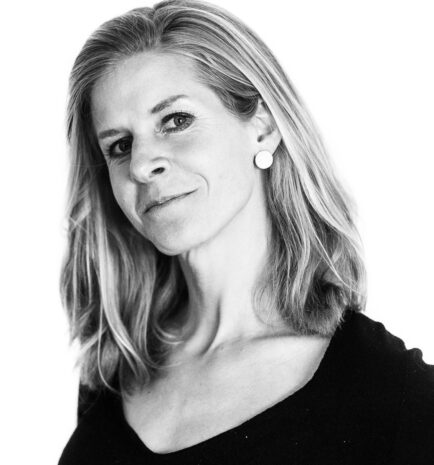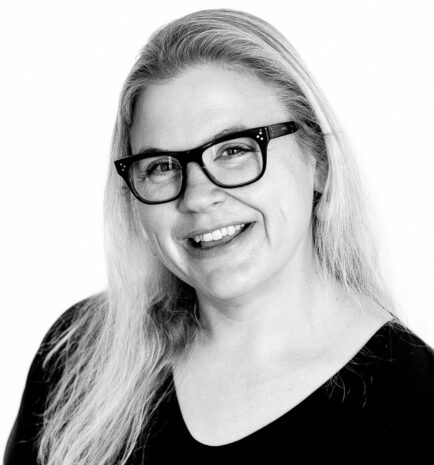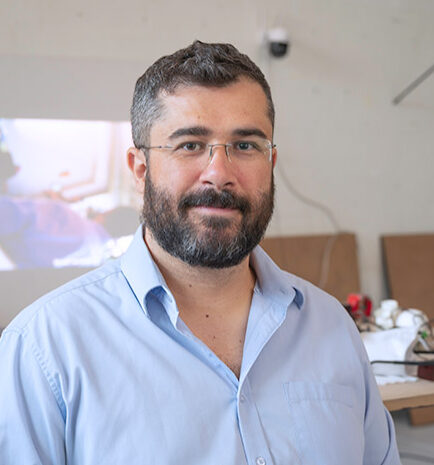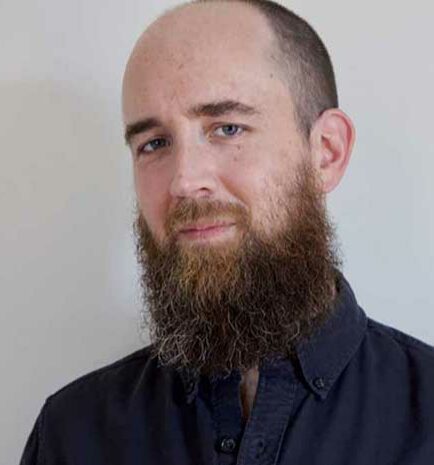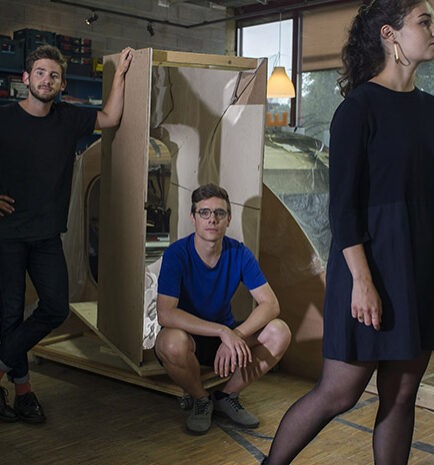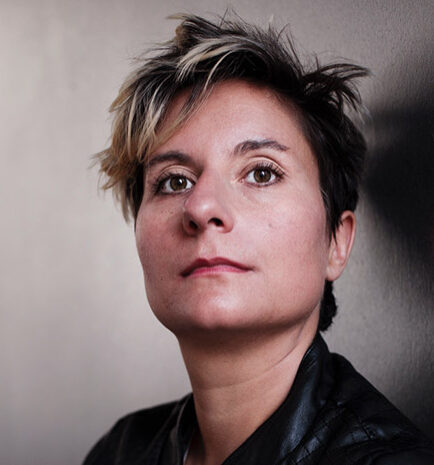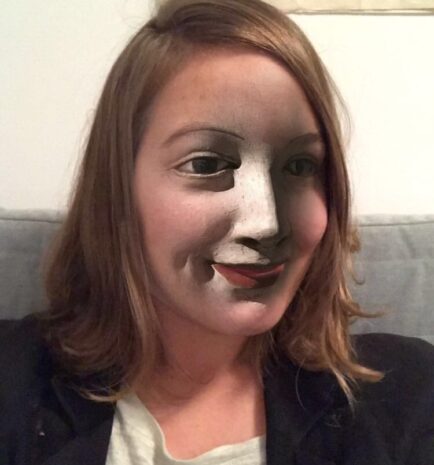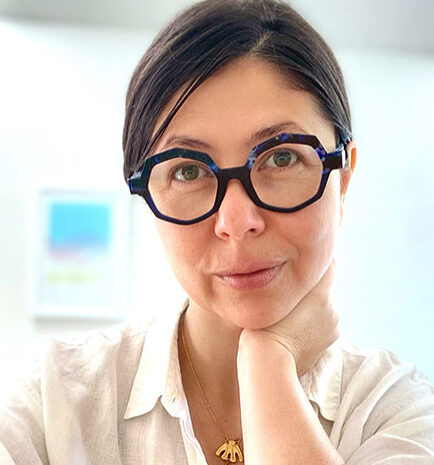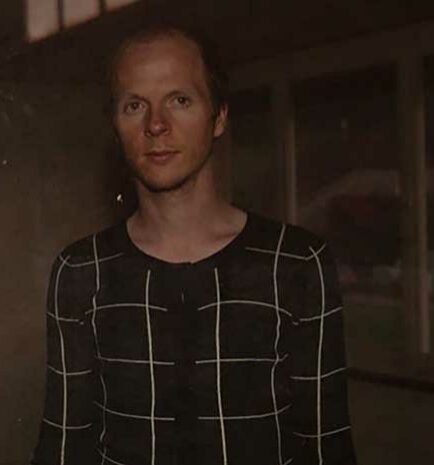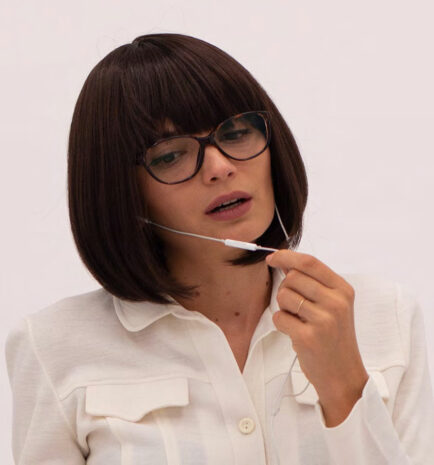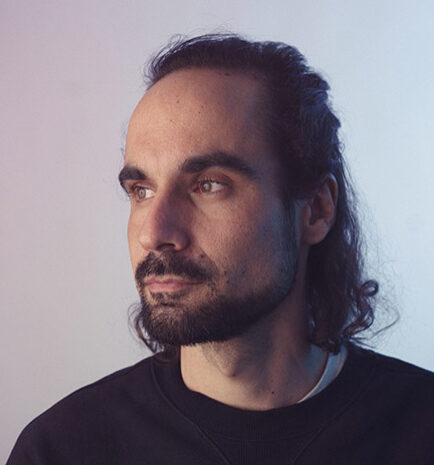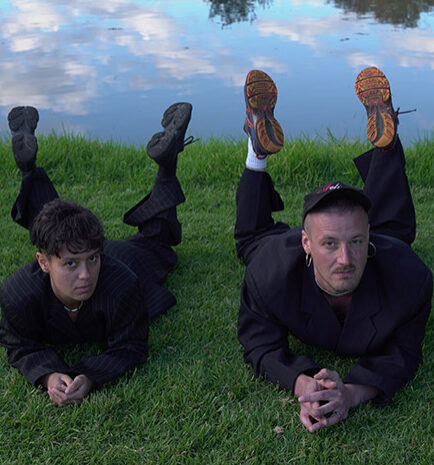
Beyond 2020: A (Post-) Pandemic Festival
Join our two-day festival to meet the Swiss artists and designers who responded to Swissnex in San Francisco’s artist call Beyond 2020: A (Post-) Pandemic Project.
Join our two day festival to meet the artists and designers who responded to Swissnex in San Francisco’s artist call Beyond 2020: A (Post-) Pandemic Project. Learn how their artistic processes adapted to the pandemic (stay at home orders, cancellation of live exhibitions and engagements, inability to work and collaborate in person) and see how they responded by producing videos, websites, blogs, performances and digital interventions. As the world begins to re-open with the optimism of vaccinations, join us for the Beyond 2020: A (Post-) Pandemic Festival to learn how their practices have changed, and to hear about their learnings as we move to a hybrid in-person and digital world.
The artists selected for this project responded to the call for participation with exhibition proposals for Swiss-US artist exchanges in various digital formats from sound installations, to research blogs, and social media applications. The artists spent the past year working from homes and studios around the globe from Switzerland (Bern, Zurich, Lausanne and Geneva); Portland in Oregon, Providence in Rhode Island, San Francisco, Berlin, Rome, Amsterdam and beyond.
-
![Beyond 2020: A (Post-) Pandemic Festival]()
Beyond 2020: A (Post-) Pandemic Festival Day 1
Eight artist projects over two days exploring new digital mediums and ways of collaborating.
Day 1, May 26, 2021: Exploring New Mediums with Johanna Bruckner, Manuelita Antonio/Nico Brühlmann, Real Madrid, and Laura Couto Rosado. -
![Beyond 2020: A (Post-) Pandemic Festival]()
Beyond 2020: A (Post-) Pandemic Festival Day 2
Eight artist projects over two days exploring new digital mediums and ways of collaborating.
Day 2, May 27, 2021: Redefining Collaboration with Annie Aries/Brian House/Marcel Zaes, Alan Bogana, Fragmentin and Maria Guta/Lauren Huret.
Call For Participation Information: Beyond 2020: A (Post-) Pandemic Project
In 2020/21 our global society has been turned upside down due to a global pandemic. With limited travel, restrictions on public events or gatherings, and many people working from home, society entered a new age of digital life, communication, collaboration, and creativity. In our current times, we pose the question: how can artists continue to comment on our changing society, and engage audiences through online mediums and spark new ways of thinking? This format of online engagement has become, at times, our only available space of interaction and collaboration in this new world.
As part of our focus area that explores the need for, and promotes a healthy digital society where trust and privacy are expected by users and provided by producers of digital innovation, we’re excited to present the following eight artist projects as part of Beyond 2020: A (Post-) Pandemic Project. These artists are responding to our current times – they pose questions about our realities, identities and societies that have been shaped and transformed by digital tools that have become intertwined in our daily lives.
Selected Artists are listed below accompanied by a description of their work. Some works are still evolving and descriptions may change as the artworks are developed.
The Artists Selected
Maria Guta/Lauren Huret
Title of Work: The Soothsayings of Iris
The Soothsayings of Iris is the first collaboration between Swiss based artists Lauren Huret and Maria Guta. Based on the “73 Questions” Vogue format and “viral” type formats by highlighting their awkwardness and problematic aspects, as well as their instant worldwide broadcasting – this prophetic satire is an interview with a fictive character, mash-up of several intriguing public figures that populate our networks. Inspired by their adoptive Swiss environment and the US West Coast, the artists are fascinated by the spread of specific ideologies like new-age mysticism, tech gurus and the phenomenon of overhyped celebrities. The video piece is a commentary on how we deal with digital identity and the influence of media representation on the collective psyche. The Soothsayings of Iris is written, directed and performed by Maria Guta & Lauren Huret.
Laura Couto Rosado
Title of Work: Mission Blue Butterfly Ghost Noise (MBB Ghost Noise)
MBB Ghost Noise is a glitch noisy social media effect that distorts a human’s face in front of a smartphone camera. The altering agent of this distortion shader effect is the image of the endangered Mission Blue Butterfly that has been digitally broken into pieces. With this filter, the image is somewhat disfigured by the image of the tattered corpse of the endangered species.
This filter hijacks the new social rituals on the internet and questions our relationship to other nonhuman living species, frontline victims of the global ecological crisis. It is a counterpoint to the filters created on social networks exacerbating narcissistic and anthropocentric tendencies with these spectacular in your face posts. The MBB Ghost Noise Effect is like a digital poltergeist, a manifestation of the spectre of the MBB that comes back to haunt us – poles apart from its natural habitat destroyed by humans – on social media. Implicitly, ghostly, it parasitizes and colonizes our reflection to remind us that its destruction for which we are responsible is also a destruction of a part of ourselves and of our identity.
The social media filter project extended for almost 6 months and transformed over time to deal as accurately as possible with the issue of endangered species and more specifically the Mission Blue Butterfly in the San Francisco Bay. The project was enriched by numerous meetings and discussions with environmental scientists committed to the preservation of endangered species in the region of California.
Alan Bogana
Title of Work: Laser Sensitive
The project Laser Sensitive explores the visual culture of laser light and the mediating role of pervasive cameras and screens in our societies. This ongoing research articulates along two axes: light that harms and light that heals. The project explores different representations of intense light sources, ranging from utopian applications of lasers to their use in recent protests or as needles of light in acupuncture. Laser Sensitive comprises a website that functions as both a dynamic repository and a platform for online and offline experiments. This multiform exploration will be experienced through your digital screens, far from intense light sources.
Real Madrid
Title of Work: Fuzzy Dice
Fuzzy Dice is a short animated video that acts as a detour into the curls of time, taking us on a psychedelic cruising afternoon. It starts from a clock, getting high, and consequently evolves into different scenarios; rising into a crescendo of absurdity structured by rhythmic sound. The video follows a psychedelic narrative/aesthetic about time, addiction, non-productivity and stigmas. Fuzzy Dice is animated in collaboration with Naro.
Fragmentin
Title of Work: Binominale
Binominale (from the word “binôme”: a complementary pair) is a new type of artistic event – curated by Swiss artist collective Fragmentin – in which artist pairs from different countries exchange instructions on how to recreate or re-perform each other’s artworks remotely. Their collaboration and artistic processes are documented in a novel way and will be uploaded to a purpose-built website which serves as a modern digital archive. The resulting artworks are then simultaneously exhibited – on site and online – by two partnering institutions in the artists’ home countries This contemporary twist on the 1960s conceptual art encourages co-creation and the local sourcing of materials and production. By removing transportation, it aims for a minimal ecological impact and to redistribute the saved costs into the creation process.
The first edition of Binomiale will occur in summer 2021 in Switzerland and the USA. Simultaneously at La Becque, résidence d’artistes, la Tour de Peilz (CH) and in San Francisco (US) with the support of Swissnex SF and le Canton de Vaud. In that context, 12 artists have been preselected (six Swiss artists from the French-speaking region of Switzerland and six American artists from the Bay Area). Among these twelve initial projects, four of them will be chosen to form the two pairs of artists of the first edition of the Binominale.
Annie Aries, Brian House, Marcel Zaes
Title of Work: Metric Displacement
For Metric Displacement (2021), experimental sound artists Aries, House, and Zaes each make beats that reflect their own individual experiences of place. Each beat is subsequently cut into a lock groove on a vinyl record and played on a turntable in one of multiple global sites: Bern (Switzerland), Providence (Rhode Island), and Portland (Oregon). These are streamed to a video conference (via Zoom), so that they can be experienced together, subject to the temporal distortions inherent to online relationships. Every day, a docent at each location selects a new lock groove, creating unpredictable and emergent rhythmic combinations that can only be experienced online.
Johanna Bruckner
Title of Work: Crush Pad Lava (both project links below can be watched simultaneously or consecutively)
Crush Pad Lava Channel 1
Crush Pad Lava Channel 2
In our age of cosmological disasters and pandemic agents, Bruckner uses speculative Science Fiction as a catalyst to imagine worlds that allow us to live with the synthetic, toxic and more-than-human order of the present-day reality. Departing from the research around “atmospheric escape” which Bruckner is interested in, and as Susan Sontag puts forward, “how utopia can be imagined or experienced effectively, in small, incremental moments that proximity can provide”, Bruckner extends her research for this project with new questions of utopian possibility in our pandemic world.
(Departing from the research around “atmospheric escape”) Bruckner’s multimedia collages are an aggregation of queer AI-based net-pornography, Dark Room sci-fi, and the social bonds of extra-terrestrial bodies. The principal element in her work is the net porn data that dissipates, becomes lost, and/or fails because it is outside the spectrum of the usable. Aggregating these „non-existent“ data, her collage envisions the potential of digital failure as a refusal to submit to contemporary ‘dataveillance’ society, while at the same time, it proposes the conditions for an AI born of trans-corporeal aesthetics.
Manuelita Antonio, Nico Bruhlmann, Larissa Murangira
Title of Work: Spheres of Privilege
Spheres of Privilege is an online interactive tool which aims to create a consensual safe space for reflections and an exchange around privilege. Being constantly exposed from behind our screens to violent racist, homophobic, sexist and other unequal situations, to start conversations around privilege has been an urgent topic during the pandemic.
Synthesizing a survey of fundamental questions about race, class, and gender during specific [chapters of life] – the aim is to invite people to raise their voices and share about their underprivileged moments, or be confronted and aware of their privileges. These answers are then collected into a library of experiences, accessible to everyone to freely educate themselves on the different gaps of access to resources like education and services, the inequalities and violences that others can endure, with the wish to encourage people to make the first steps and adjustments in their daily lives to shorten these gaps and extend the conversation about privilege.
Support Team:
Pablo Peña: 3D Animator
Iván Mario Maldonado: Video Editor
Ariane Gelardine: Copy Editor
Matthias Zaugg: Sociologist
Program
Wednesday, May 26: Exploring New Mediums with Johanna Bruckner, Manuelita Antonio/Nico Bruhlmann, Real Madrid and Laura Couto Rosado
10:00am – Introduction to festival and day’s focus on Exploring New Mediums
10:10am – Four 20 minute artist project discussions
11:30am – Group discussion and Q&A
12:00pm – End of program
Thursday, May 27: Redefining Collaboration with Annie Aries/Brian House/Marcel Zaes, Alan Bogana, Fragmentin and Maria Guta/Lauren Huret
10:00am – Introduction to festival and day’s focus on Redefining Collaboration
10:10am – Four 20 minute artist project discussions
11:30am – Group discussion and Q&A
12:00pm – End of program
Bios
-
![]()
Bio
Gioia Deucher
CEO, Swissnex in San FranciscoGioia has dedicated the last decade to fostering cross-continental collaborations with a view to inspire and strengthen Switzerland’s innovation ecosystem. Before setting out to build the first Latin American swissnex office Brazil in 2013, she headed the Startup and Innovation team at swissnex in San Francisco, where she returned to as CEO, in July of 2017.
-
![]()
Bio
Mary Ellyn Johnson
Curator & Creative StrategistMary Ellyn Johnson is a curator and creative strategist based in Minneapolis and San Francisco. She creates interdisciplinary exhibitions and public programs in collaboration with international artists and institutions. Formerly the Head of Exhibitions at Swissnex in San Francisco she also held positions as curator at the San Francisco Art Institute and librarian at the Walker Art Center in Minneapolis.
-
![]()
Bio
Alan Bogana
ArtistAlan Bogana is an artist based in Geneva. Over the years, Bogana has developed a multiform art practice involving installations, sculptures, time-based media, virtual realities and holograms. His research focuses on the real and speculative behavior of light as well as on the emergence of organic shapes and patterns by means of technological processes. He holds degrees from HEAD Geneva (2009) and ZHdK Zurich (2013).
-
![]()
Bio
Annie Aries
Composer & MusicianIn the world of modular synthesizers and patch cords, Annie explores, performs and composes music and opens up sonic spaces between electronica and experimental sounds. In her works, she creates minimalistic sound textures and recurring rhythmic patterns that organically interweave, distance and disappear. With her bands Aries Zaes, Volca Massaker Orchester and Berg & Berg she regularly tours in Europe.
-
![]()
Bio
Brian House
ArtistBrian House (b. 1979 in Denver, US) is an artist who investigates the politics of time in human and nonhuman systems. Incorporating sound, computation, and multidisciplinary research, his practice has traversed subjects from geolocation infrastructure to urban rats. Currently, House is Assistant Professor of Art and Studio Head of Digital Media at Lewis & Clark College in Portland, Oregon. He holds a PhD in Computer Music from Brown University. brianhouse.net
-
![]()
Bio
Fragmentin
Artist CollectiveFragmentin is an artist collective based in Lausanne, Switzerland, founded in 2014 and composed by three ECAL alumni: Laura Perrenoud, David Colombini and Marc Dubois. At the crossroads of art and engineering, Fragmentin’s work questions the impact of the digital on everyday life by investigating these technologies’ disposition towards control and opacity. The studio’s artworks demystify complex systems and reveal the tension arising from emergent technologies.
-
![]()
Bio
Johanna Bruckner
ArtistJohanna Bruckner is an internationally exhibited artist based in Switzerland. Her work related to ideas of networks and ecologies of trust and care with an emphasis on imagination as a central instrument for exploring new temporalities. She conceives of the hybridization of the nonhuman and human as a starting point for the indeterminacy and queerness of being. Bruckner is currently a fellow at the Jan Van Eyck Academie.
-
![]()
Bio
Laura Couto Rosado
Product & Interaction DesignerLaura Couto Rosado is a product and interaction designer based in Geneva. Her hybrid practice at the crossroads of multiple disciplines pushes the boundaries of design to explore ecological imaginaries and confront societal issues. After a DNSEP in Product Design at ISDAT in France and a Master in Media Design at HEAD-Geneva, she won the Prix d’Excellence of the Hans Wilsdorf Foundation.
-
![]()
Bio
Lauren Huret
Visual ArtistLauren Huret’s work is mainly composed of videos, installations, performances and collages, is based on an on-going examination of the influence of media and tech culture on belief systems. She has exhibited at Kunsthaus Langenthal, Hard Hat Gallery in Geneva, La Panacée in Montpellier, Copenhagen Contemporary, at Centre d’art contemporain de Genève, at Centre Culturel Suisse in Paris, at the Haus der Elektronischen Kunste in Basel, at Jeu de Paume in Paris.
-
![]()
Bio
Manuelita Antonio Rangel Sosa
ArtistMARS [Manuelita Antonio Rangel Sosa] was born in the Venezuelan Andes. As an architect and an academic, she serendipitously moved to San Francisco in 2003. In 2014 she founded an Art Collective, the AbsurdistInternational, and in 2016 she merged all of her practices into her Creative Studio: SuperWorks, where she collaborates with artists, designers, engineers, shamans and others to create online environments and experiments rooted in social impact and the common good.
-
![]()
Bio
Marcel Zaes
Artist & ResearcherMarcel investigates mechanical time with an interdisciplinary framework and is currently pursuing his Ph.D. in Music & Multimedia Composition at Brown University. His creative practice consists of assemblages of self-made software code that act as mechanical timekeepers and human performers who they play “against,” thereby creating an affective potential to re-think the gap between what is conceived of as “human” versus “mechanical” temporality.
-
![]()
Bio
Maria Guta
ArtistMaria’s work mainly looks into mechanisms of self-representation which she reenacts by placing herself both behind and in front of the camera. Perpetually constructing and curating alternate cyber-identities, she makes use of immersive digital tools and social media in her work. She holds a BFA in Graphic Design from The National University of Arts in Bucharest and a MA in Art Direction from École cantonale d’art de Lausanne (ECAL).
-
![]()
Bio
Nico Bruhlmann
ArtistNico Brühlmann is a freelance artist based in Bern. His work forms on progressive web code and digital design techniques, using these tools for building impactful projects, most notably within the SuperWorks community. Situated in visual arts, he likes to create and think in pictures – and every now and then, goes on sonic journeys for the love of radio. Nico currently works under the alias mindshaped. Visit his Linktree.
-
![]()
Bio
Real Madrid
ArtistsReal Madrid, founded in Geneva in 2015, examines social constructions and sexual development, with a focus recently on STDs. Their name taken from a famous football team, manifests an interest in mass-miscommunication while turning problematic the distribution and indexing of images on any search engine. Exhibited internationally, they have upcoming exhibitions at ICA Milano, Centre d’édition contemporaine (CEC) in Geneva and the Swiss Institute in New York in 2022.

